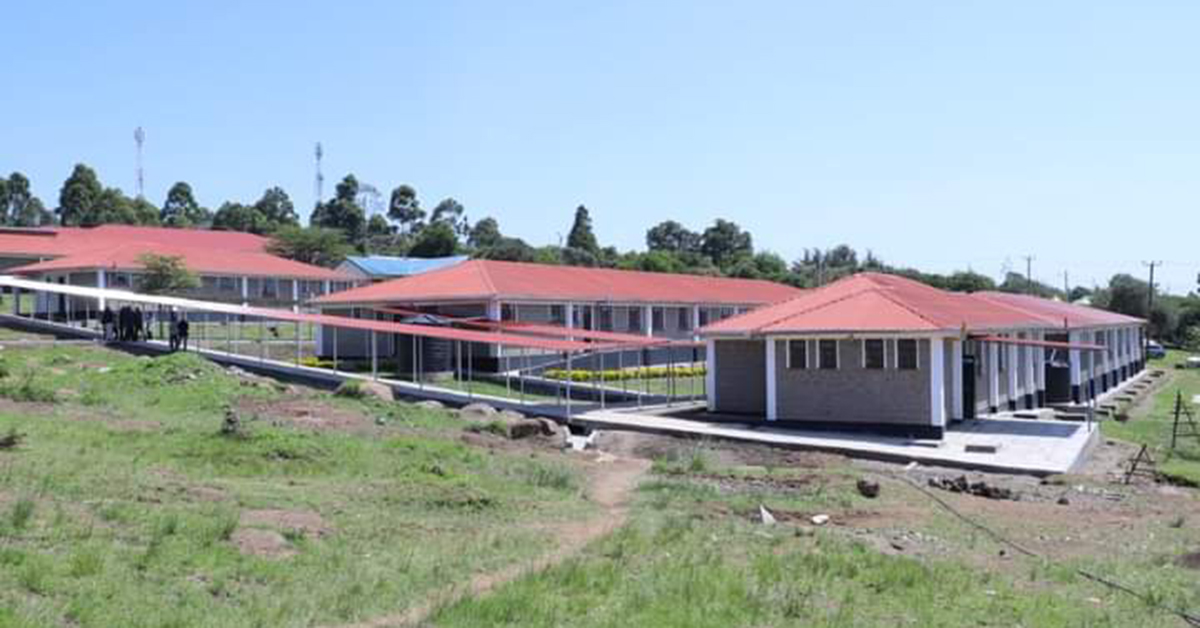Emurua Dikirr’s abandoned health facility prepares to roar to life

Emurua Hospital in Narok County. Photo/Salma Swaleh
Reviving Hope: The struggle to breathe life into Emurua Dikirr’s abandoned health facility
In the heart of Emurua Dikirr, a once-promising beacon of hope stands silent and forsaken.
A Sh300 million health facility, conceived with the noblest intentions, now languishes in neglect.
Its walls echo with the ghosts of unrealized dreams, while the community it was meant to serve grapples with desperation.
How did this state-of-the-art hospital, commissioned by former Governor Samuel Tunai and initiated by former President Uhuru Kenyatta, fall into disrepair? Why does it remain a mere shell, its promise unfulfilled?
The Emurua Dikirr Health Centre, once hailed as a beacon of progress, now stands as a testament to bureaucratic inertia.
In 2017, when the first bricks were laid, the community rejoiced. Finally, they would have access to quality healthcare without embarking on arduous journeys to distant hospitals.
Radiology machines gleamed, operating theaters awaited their first incisions, and a mortuary stood ready to cradle the departed. But as the years slipped by, the facility remained locked, its doors barred to those in need.
Residents complained of the need to travel long distances to get medical services despite them having a facility at their area.
Daniel Langat, an Emurua resident, shakes his head in disbelief.
“We travel over 70 kilometers to seek medical services,” he laments. “Yet this hospital, just a stone’s throw away, gathers dust. It’s disheartening.”
Rachael Parngas, another resident, her eyes weary from countless trips to far-flung hospitals, implores the current Governor to act.
"We are forced to seek medical services from Longisa, Tenwek, Kaplong, and Ntanai hospitals, which are far from our homes," she explained.
Kiptuya Morgo recounted a heart-wrenching experience, despite the proximity of Emurua Dikirr’s fully equipped and operational mortuary, his brother’s body had to be transported to Kaplong Mortuary, resulting in unnecessary expenses.
The irony is stark—a facility meant to serve the community lies idle while families bear the burden of seeking services elsewhere.
Bowen Kipkirui, comparing their plight to neighbouring Ololulunga and Lolgorian hospitals, declares, “Emurua Dikirr has been left behind.”
Weldon Rop, the Chief Officer of the county government and a local resident, steps forward and speeks on behalf of the county government.
His eyes reflect determination. “We’ve allocated funds,” he announces, “for essential equipment—radiology machines, hospital beds—all delivered to the facility.”
The promise of progress hangs in the air.
Rop continues to say, “The governor pledges an upgrade from Level 3 to Level 4. Gazetting is underway and necessary steps are being taken.”
A generator, purchased with purpose, awaits its arrival. Within weeks, it will hum to life, breathing energy into the dormant facility.
The Medical Officer of Health Dr Brian Kibett, shares his optimism.
“Three-phase power,” he assures, “will awaken our radiology machines, illuminate our theater, and bring life to our mortuary.”
But there’s a caveat. The mortuary’s incomplete installation hinges on power supply.
The community holds its breath, praying for swift resolution.
The county government’s promise extends beyond infrastructure. Additional staff will soon walk these halls, tending to the sick, comforting the grieving. Emurua Dikirr’s heartbeat will quicken, and its pulse will resonate with renewed purpose.
As the sun sets over the abandoned health facility, hope flickers a fragile flame. The community watches, yearning for the day when the doors swing open, and healing spills forth.
